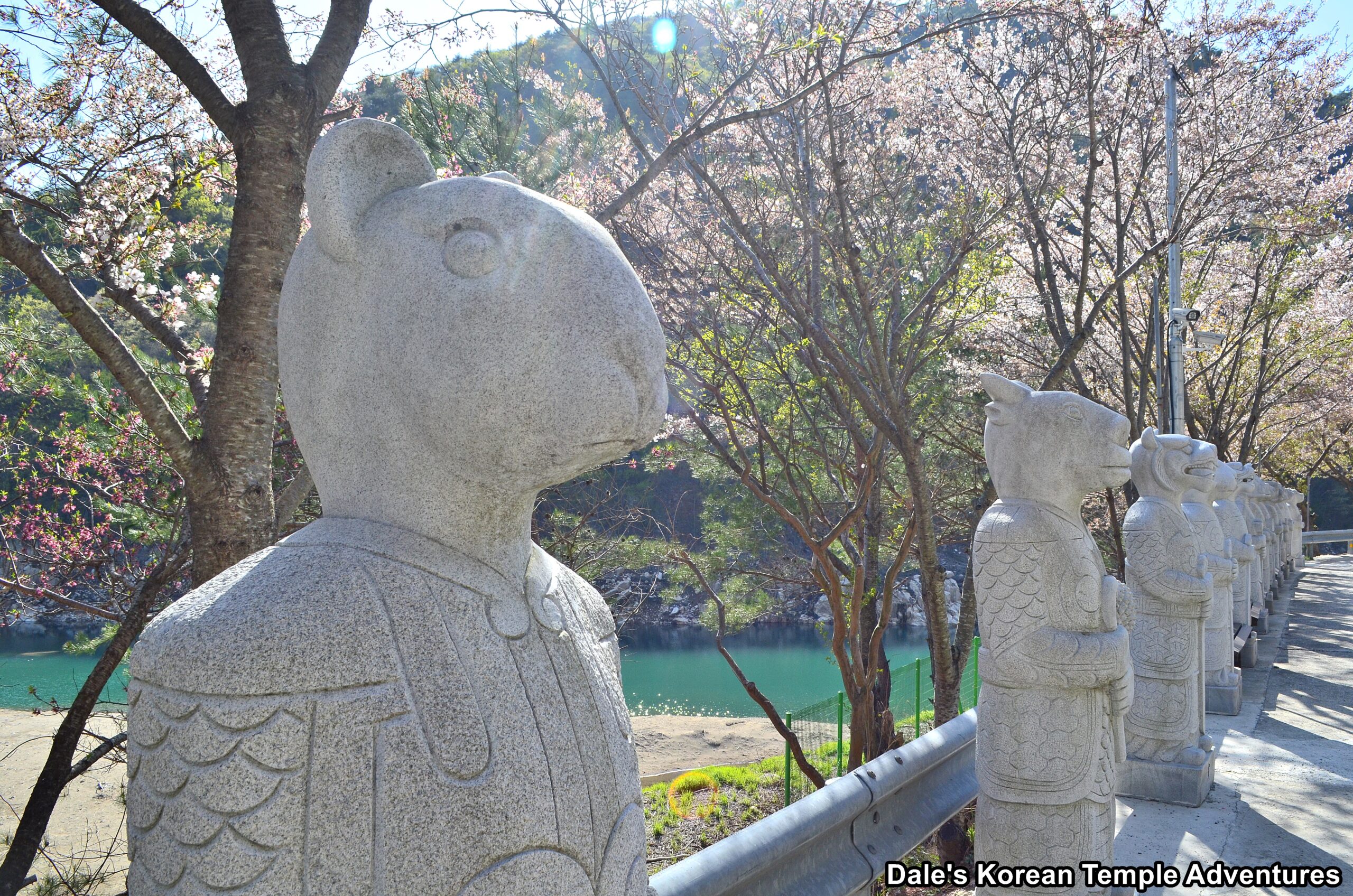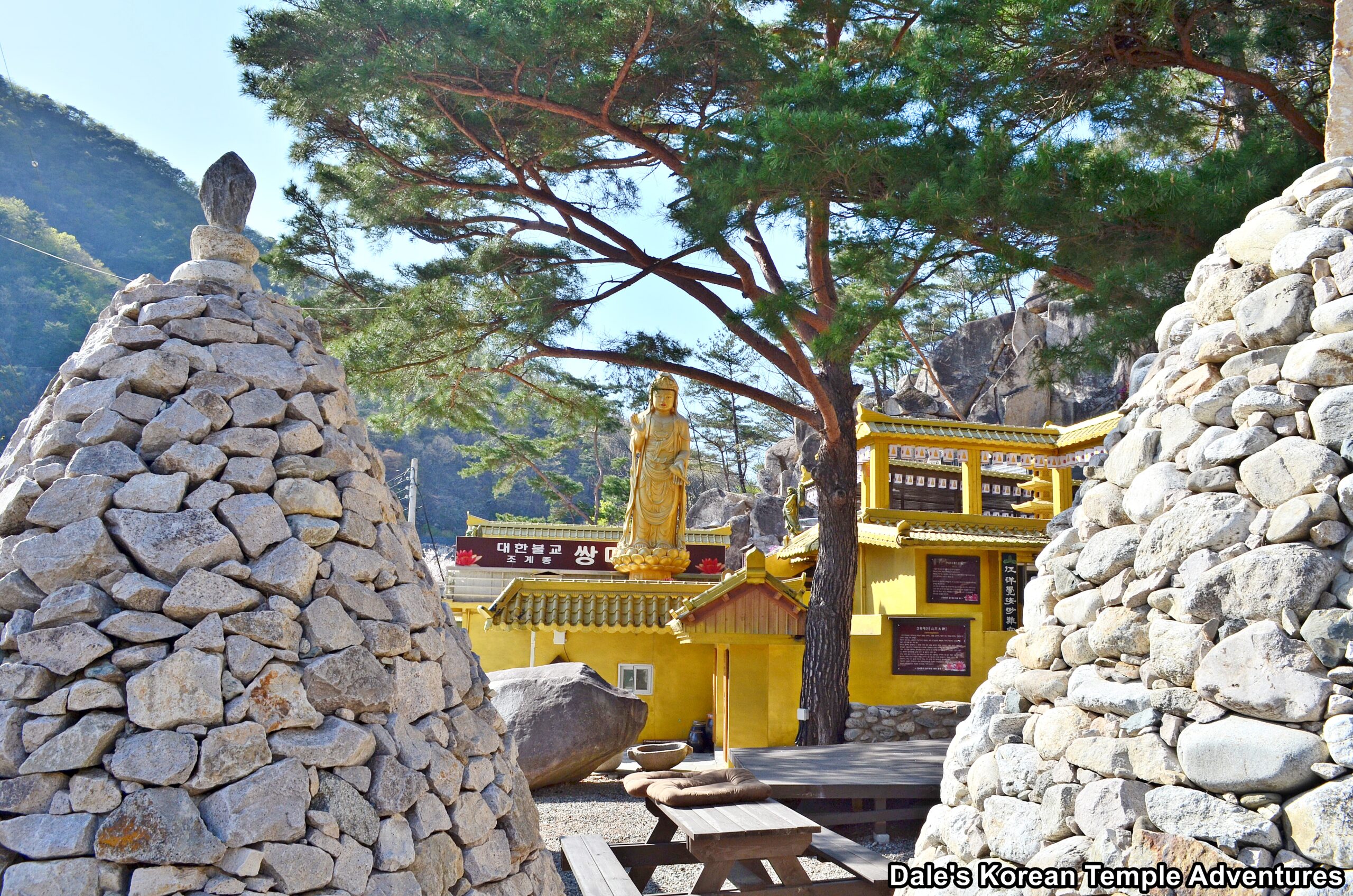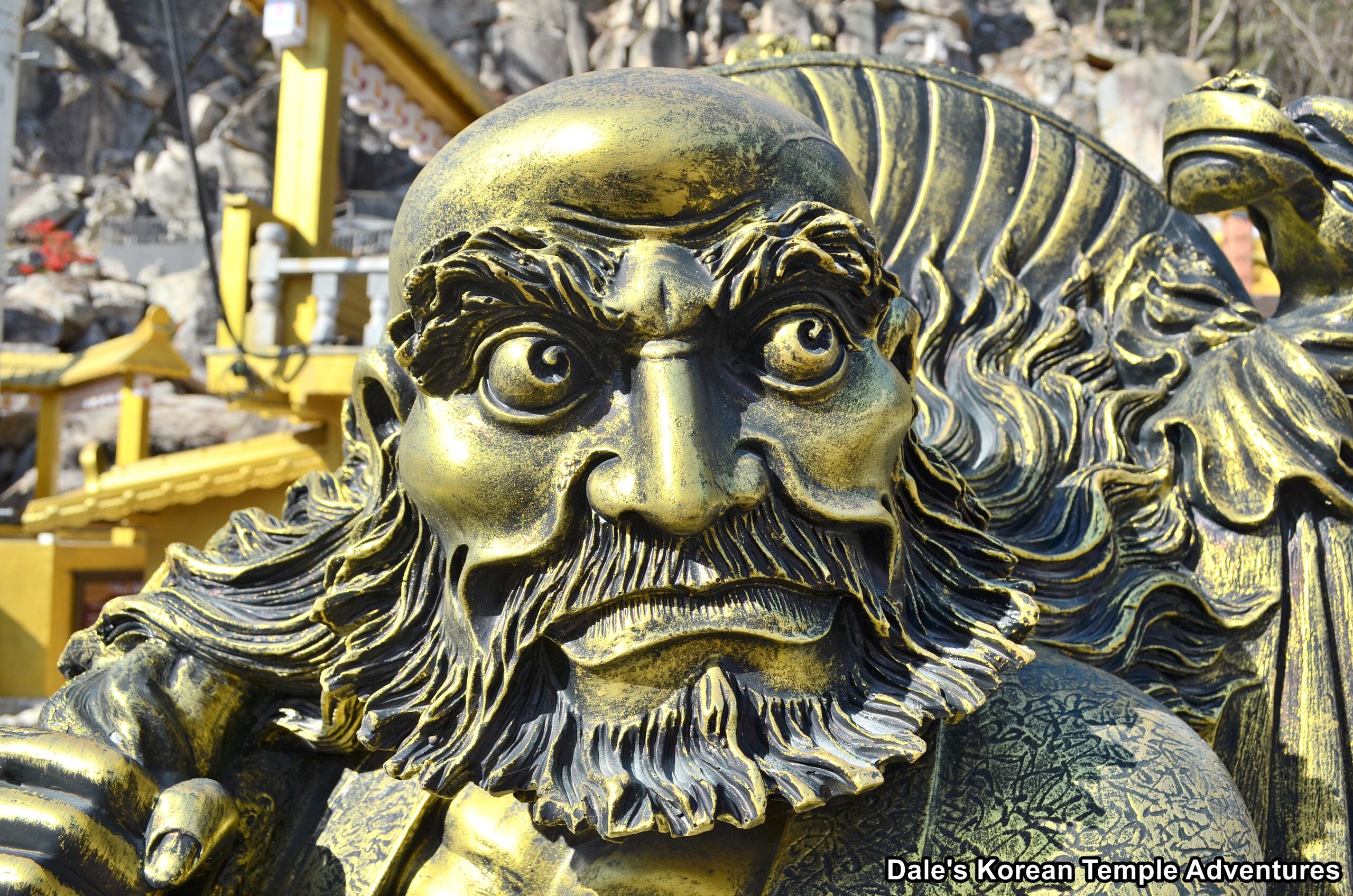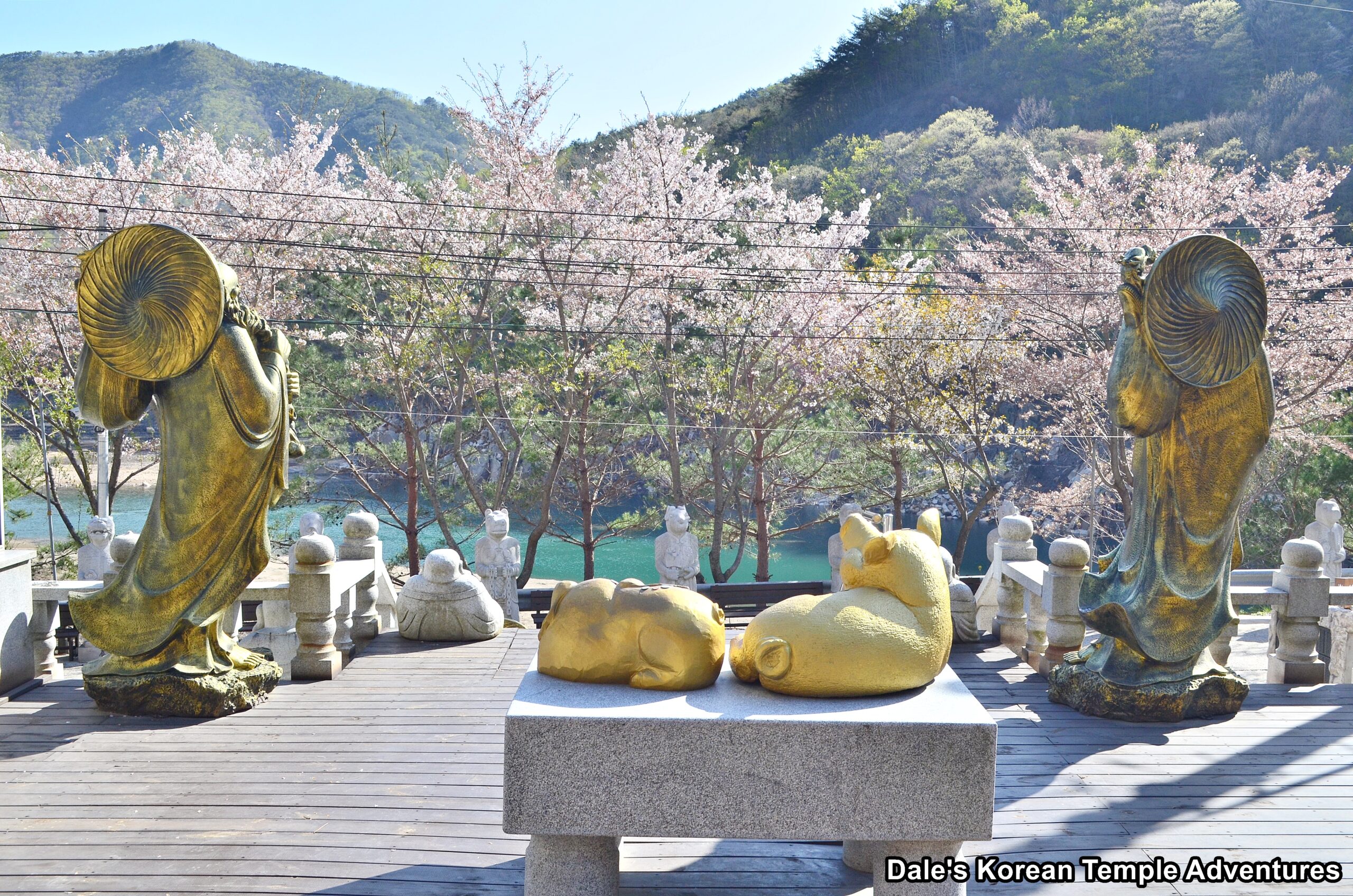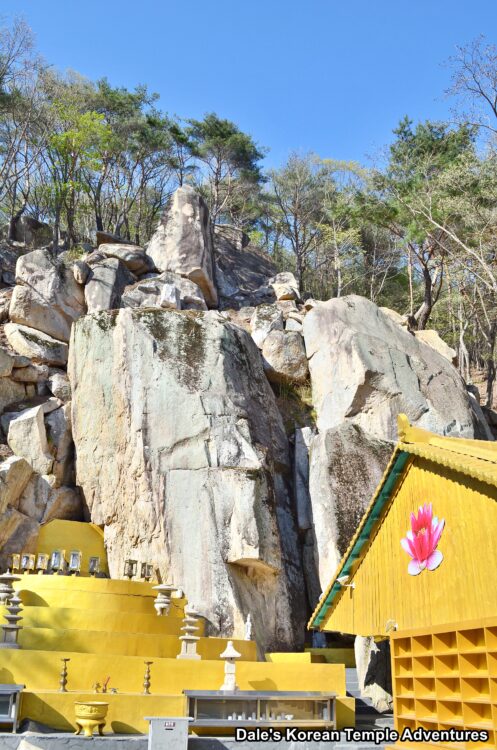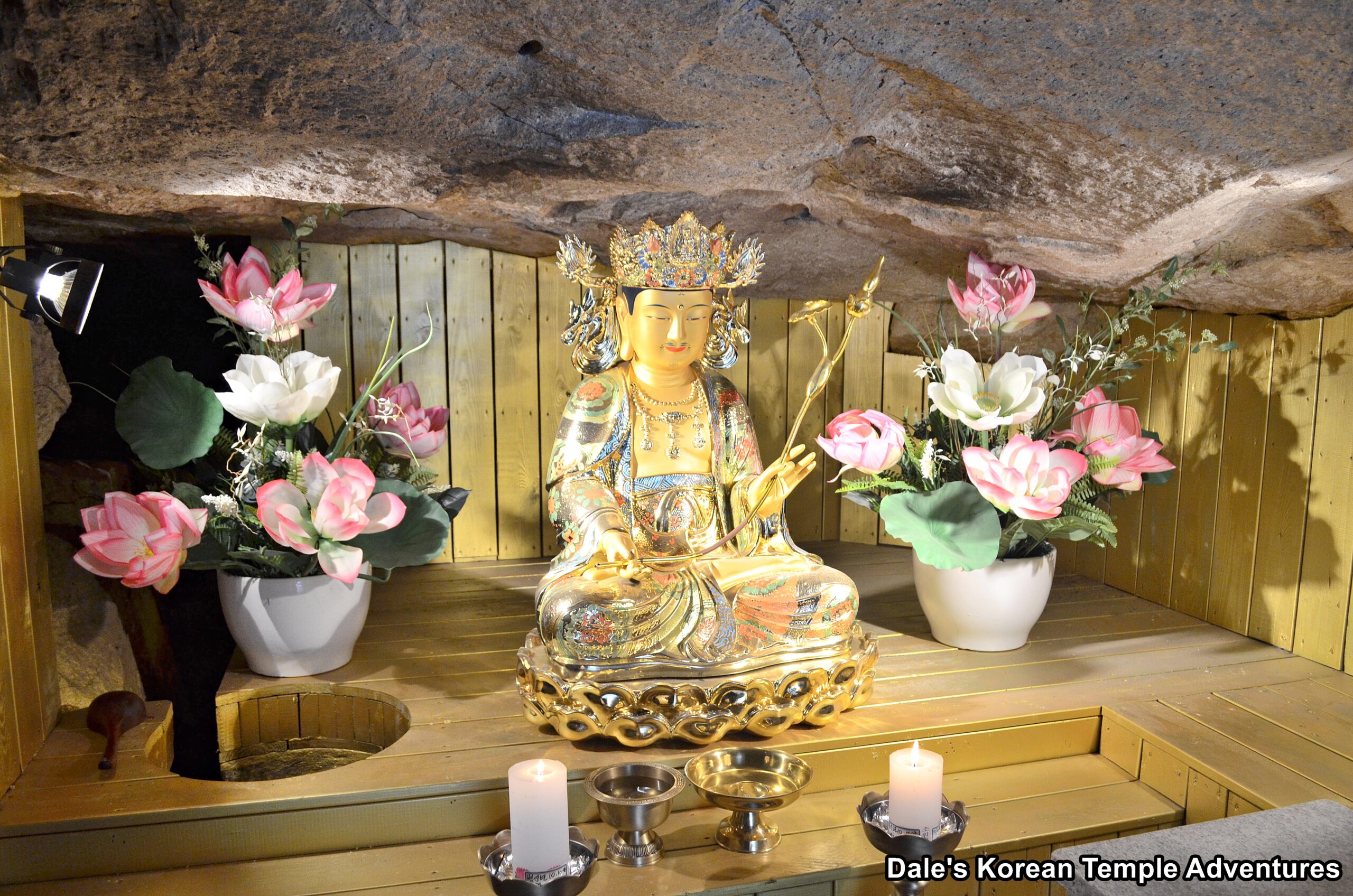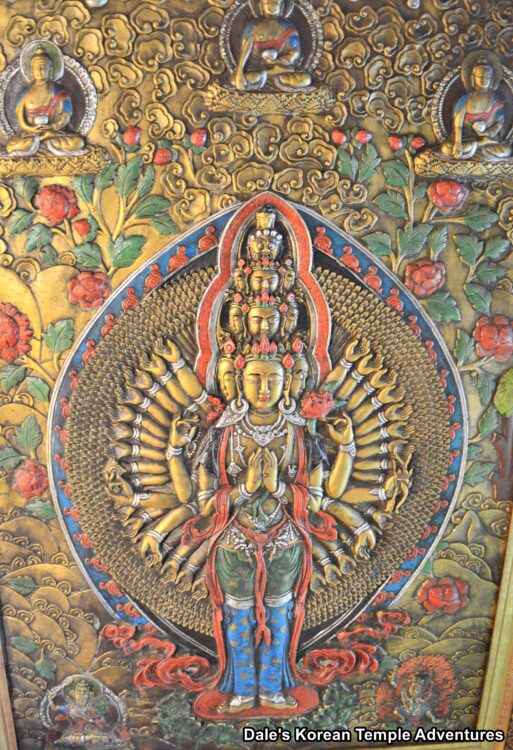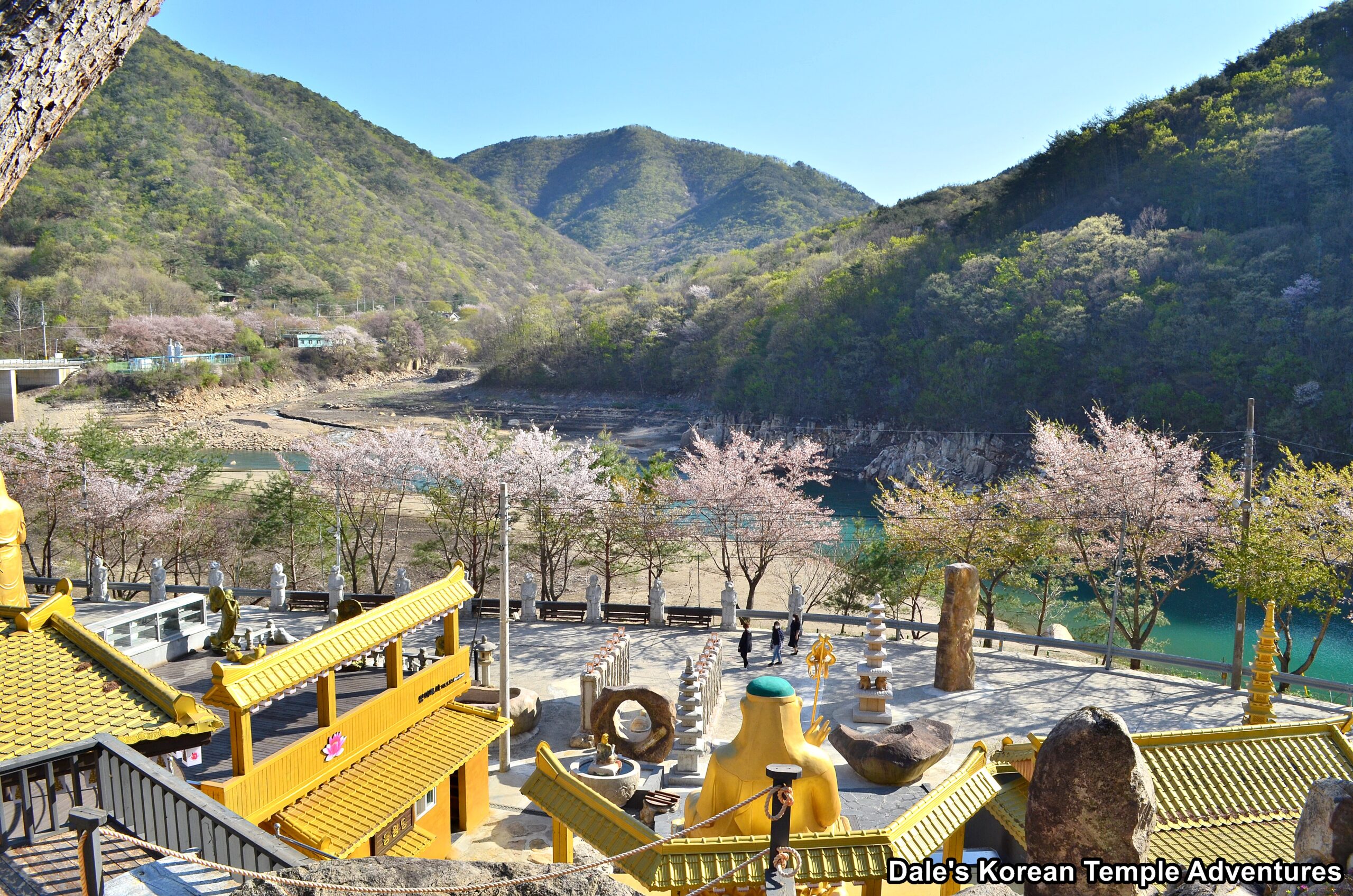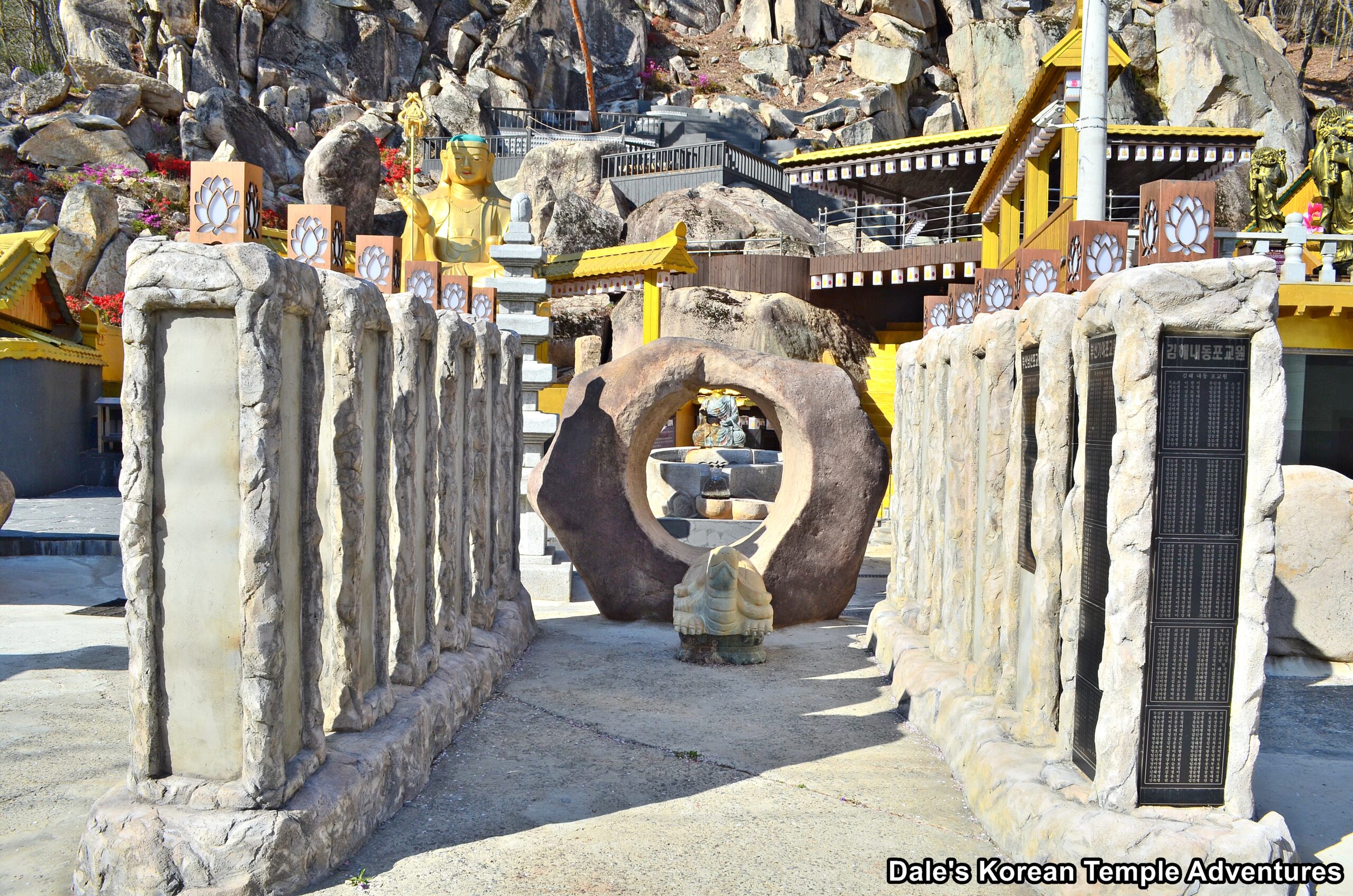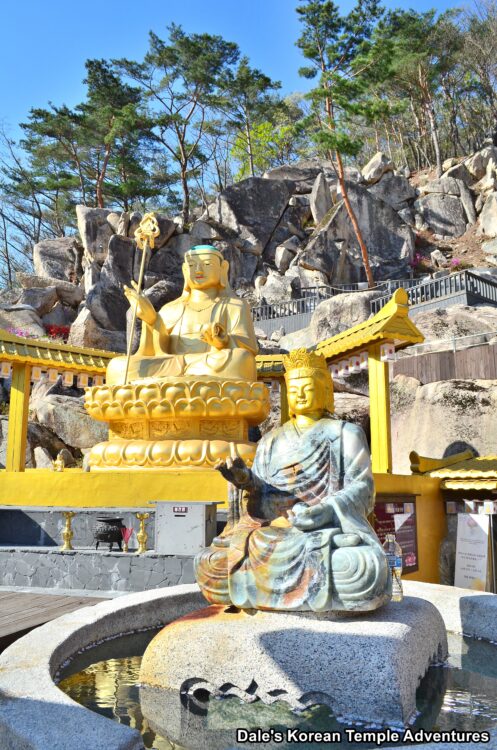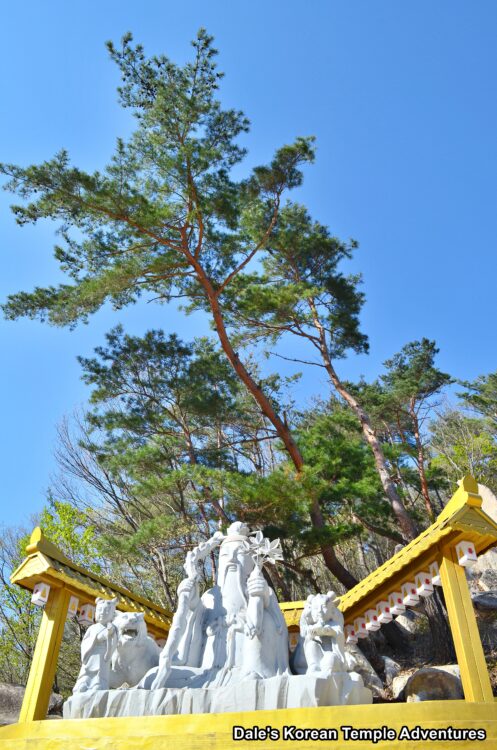Ssangmireuksa Temple – 쌍미륵사 (Yangsan, Gyeongsangnam-do)
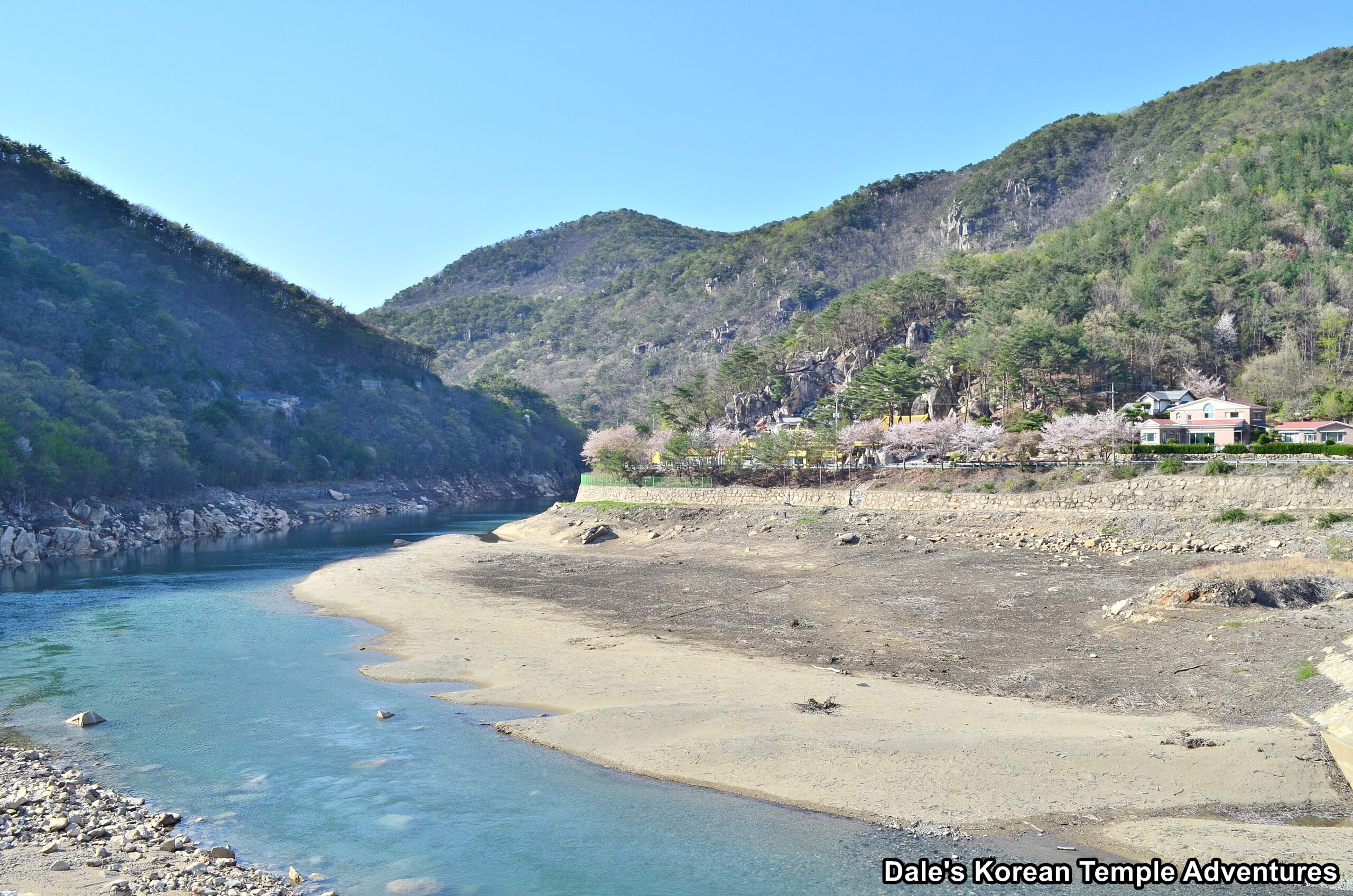
Temple History
Ssangmireuksa Temple is located at the base of Mt. Hyangrosan (726.7 m) in the very scenic Baenaegol Valley in northern Yangsan, Gyeongsangnam-do. A beautiful flowing stream from Lake Miryang passes by the front of the temple. Ssangmireuksa Temple means “Twin Future Buddhas Temple” in English. Originally, the temple was known as Seongbulsa Temple. In 2019, the temple changed its name to Ssangmireuksa Temple. The probable reason for the name change is that the head monk at the temple probably changed, as well. The current head monk at Ssangmireuksa Temple was looking for the twin Mireuk-bul (Future Buddha) for thirty-seven years. He finally found the twin image of Mireuk on the rock face on the southern part of Mt. Hyangronsan. With this discovery, the name of the temple changed to the rather obvious Ssangmireuksa Temple.
Temple Layout
In an elbow in the stream, and past a few pensions, you’ll make your way up towards Ssangmireuksa Temple. The first thing to greet you, besides the overwhelming amount of gold found on all surfaces and statues at Ssangmireuksa Temple, is a row of three metre tall stone statues dedicated to the Zodiac, or “Sibijin-shin” in Korean.
Across from these Zodiac statues, and to the right, you’ll find five large, stone pagodas reminiscent of the ones that can be found at Tapsa Temple in Jinan, Jeollabuk-do. Past these five pagodas, you’ll come to the very golden modern compound that is Ssangmireuksa Temple. The first thing in the temple compound to greet you is the visitors centre and a set of stairs that lead up to the second story of the interlocking temple shrine halls.
Up these set of stairs, and slightly to the left, is the Daeung-jeon Hall. This hall is beautifully framed to the right by a row of red pines. The golden exterior of the Daeung-jeon Hall is adorned with a pink lotus flower. Stepping inside the Daeung-jeon Hall, you’ll first be greeted by several rows of three different figurines of Buddhas and Bodhisattvas. The first in the set is of Mireuk-bul (The Future) joined by Gwanseeum-bosal (The Bodhisattva of Compassion) to right, and Jijang-bosal (The Bodhisattva of the Afterlife) to the far right. Continuing a little further into the Daeung-jeon Hall, you’ll notice a Shinjung Taenghwa (Guardian Mural) to your left in a nook. And on the main altar straight ahead of you, you’ll notice a beautiful stone statue dedicated to Mireuk-bul with a three-story hat atop his head. This statue is then backed by seven smaller standing statues dedicated to the Future Buddha, as well. To the right of this main altar, and on a shrine of its own, is a green haired statue dedicated to Jijang-bosal.
Stepping outside the Daeung-jeon Hall, and in a clearing of her own, is a five metre tall statue dedicated to Gwanseeum-bosal. The statue serenely looks to the east and pours sweet ambrosia from her golden bottle. To the right of the Daeung-jeon Hall, on the other hand, is the rock face for which the temple gets its name. There is a sign that helps you distinguish where exactly these natural stone monuments to Mireuk-bul stand. There’s a large multi-tiered golden altar that leads up to the rocks where prayer services are frequently held.
Up a set of stairs to the left of the twin Mireuk-bul rocks, you’ll pass by a collection of three smaller sized Podae-hwasang (The Hempen Bag) statues, as well as three statues dedicated to “see no evil, hear no evil, speak no evil.” A little further up these set of stairs, you’ll find a shrine dedicated to Sanshin (The Mountain Spirit). This standing statue dedicated to Sanshin is a newer outdoor shrine dedicated to this particular shaman deity. It’s also from this vantage point that you get a great view of the temple compound, the mountain azaleas, and Baenaegol Valley.
Back at the entry of Ssangmireuksa Temple, next to the visitors centre, instead of heading right up the stairs towards the Daeung-jeon Hall, you can travel to the left towards a jovial stone statue of Podae-hwasang (The Hempen Bag). It should be noted that Podae-hwasang is believed to be an incarnation of Mireuk-bul (The Future Buddha), for which the temple gets its name. Past this statue, and a pair of book-ending statues of golden Bodhidharma, you can also mount the wide stairs to make your way up to the stone altar dedicated to the twin Mireuk-buls, as well as the Daeung-jeon Hall.
To the left of this wide wooden staircase, and the collection of four Bodhidharmas, is a strange looking outdoor shrine. This outdoor shrine looks like a variation of the spinning prayer wheels which are more commonly found in Tibetan Buddhism. In this case, they are long rectangular stone monuments with sutras written on them, as you are led up to a stone turtle and a circular hole cut out of some rough stone. On the other side of this stone circular hole is a jade statue of Yaksayeorae-bul (The Medicine Buddha, and the Buddha of the Eastern Paradise) crowning the temple’s water fountain. Rather strangely, it looks as though the jade head of the statue has been replaced or painted gold like when you were a kid and you ripped the head off of one of your dolls and attached it to the body of a different doll. Yes, it looks that strange.
To the left of this outdoor shrine is a large green haired statue dedicated to Jijang-bosal (The Bodhisattva of the Afterlife). And to the left of this outdoor shrine dedicated to the Bodhisattva of the Afterlife are a pair of pagodas. The one to the right is reminiscent of the Four Lion Three-story Stone Pagoda at Hwaeomsa Temple. The one at Ssangmireuksa Temple is five-stories instead of three like at Hwaeomsa Temple, and it’s more modern and less refined. However, it is still beautiful in its own right. To the left of this five-story lion based pagoda is the rather garish five-story slender all-gold stone pagoda. This pagoda seems to have simply been painted gold. And backing this pagoda is a large outdoor shrine dedicated to Sanshin (The Mountain Spirit). Just a year ago, this stone statue dedicated to the shaman Mountain Spirit was situated at the entry of the temple. It’s now replaced the former statue of Mireuk-bul that once stood perched atop a wide golden outdoor altar.
There are a couple shrine halls interspersed among the folds of the large and sprawling temple complex. To the rear of the rather odd statue of Yaksayeorae-bul is the Yongwang-dang Hall. This low-ceiling shaman shrine hall houses a beautiful stone statue dedicated to Yongwang (The Dragon King). And it’s next to this shaman shrine hall that you’ll find the beautifully lit Gwaneum-jeon Hall. At the end of another low-lying rock cave you’ll see a statue of Gwanseeum-bosal (The Bodhisattva of Compassion). This statue is joined by a relief to the right of the Bodhisattva of Compassion.
How To Get There
From the Yangsan Intercity Bus Terminal, you’ll need to take a taxi to get out to Ssangmireuksa Temple. The taxi ride takes about forty minutes, and it’ll cost you about 25,000 won one way. (The Google Map has yet to update the temple’s name to Ssangmireuksa Temple from Seongbulsa Temple).
Overall Rating: 6.5/10
Ssangmireuksa Temple can be a bit much for the Korean Buddhist temple traditionalist with its gold colour everywhere including the shrine halls, statues, and pagodas. Also, the shrine halls seem to be layered on top of each other. However, if you can get past a bit of this garishness, you’ll find some beautiful Buddhist artwork like the Mireuk-bul statue inside the Daeung-jeon Hall, the outdoor Sanshin stone statue, and the Zodiac statues at the entry to the temple, as well as the rather peculiar spinning prayer wheels in stone tablet form. Adding to all this oddity is the natural beauty that surrounds Ssangmireuksa Temple in the Baenaegol Valley area of Yangsan, Gyeongsangnam-do. So if you want to see something a little bit different, as well as something natural beauty, Ssangmireuksa Temple is the place for you.
